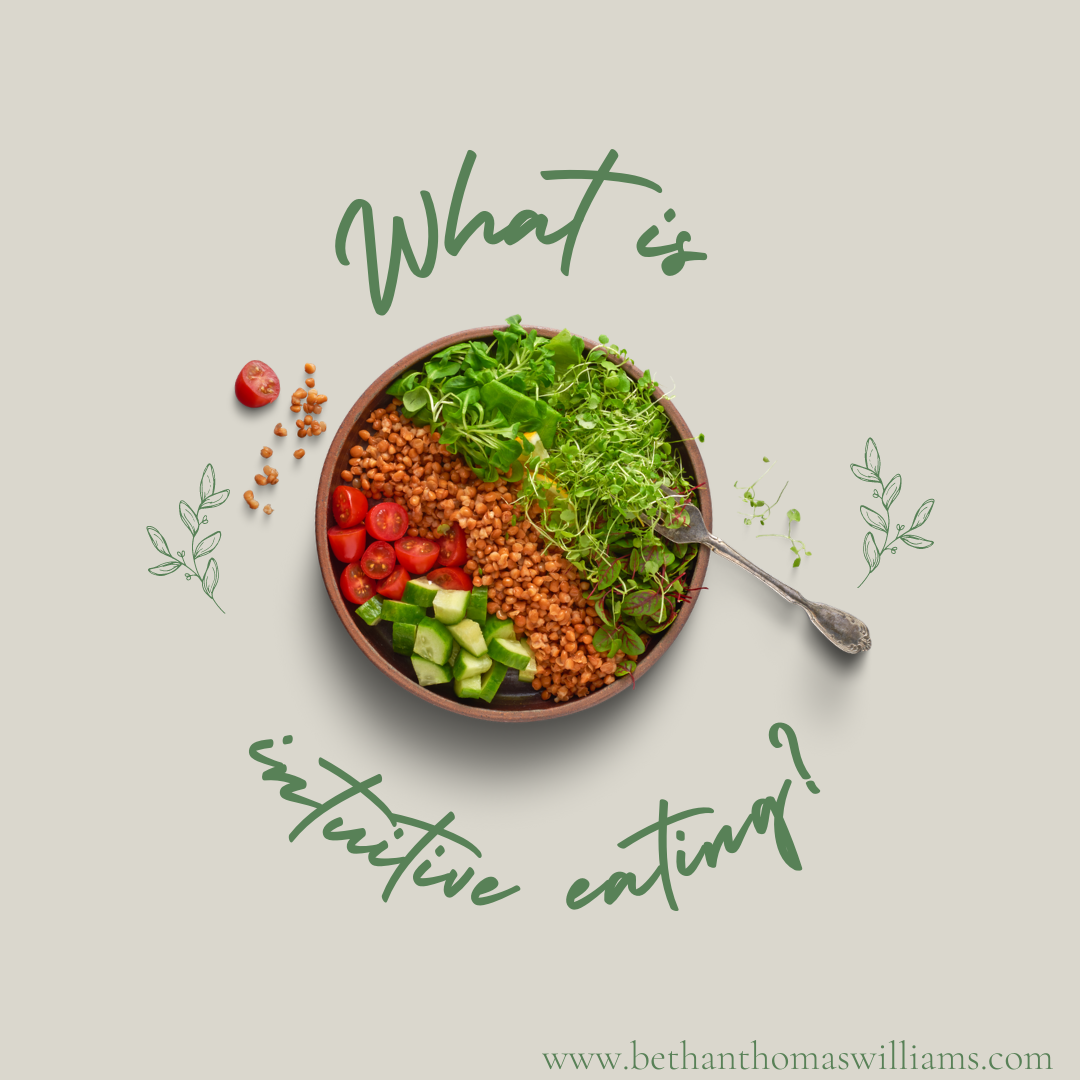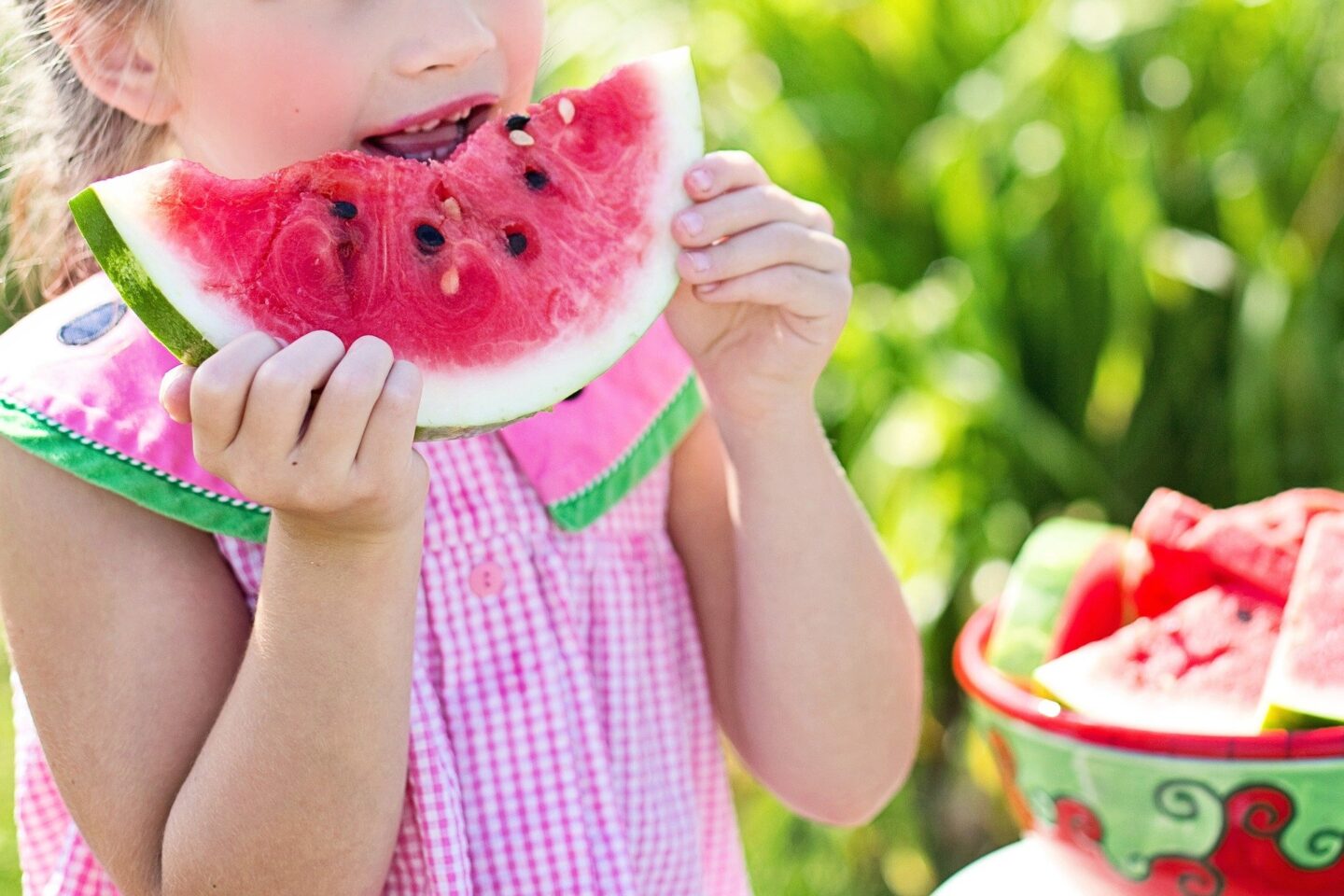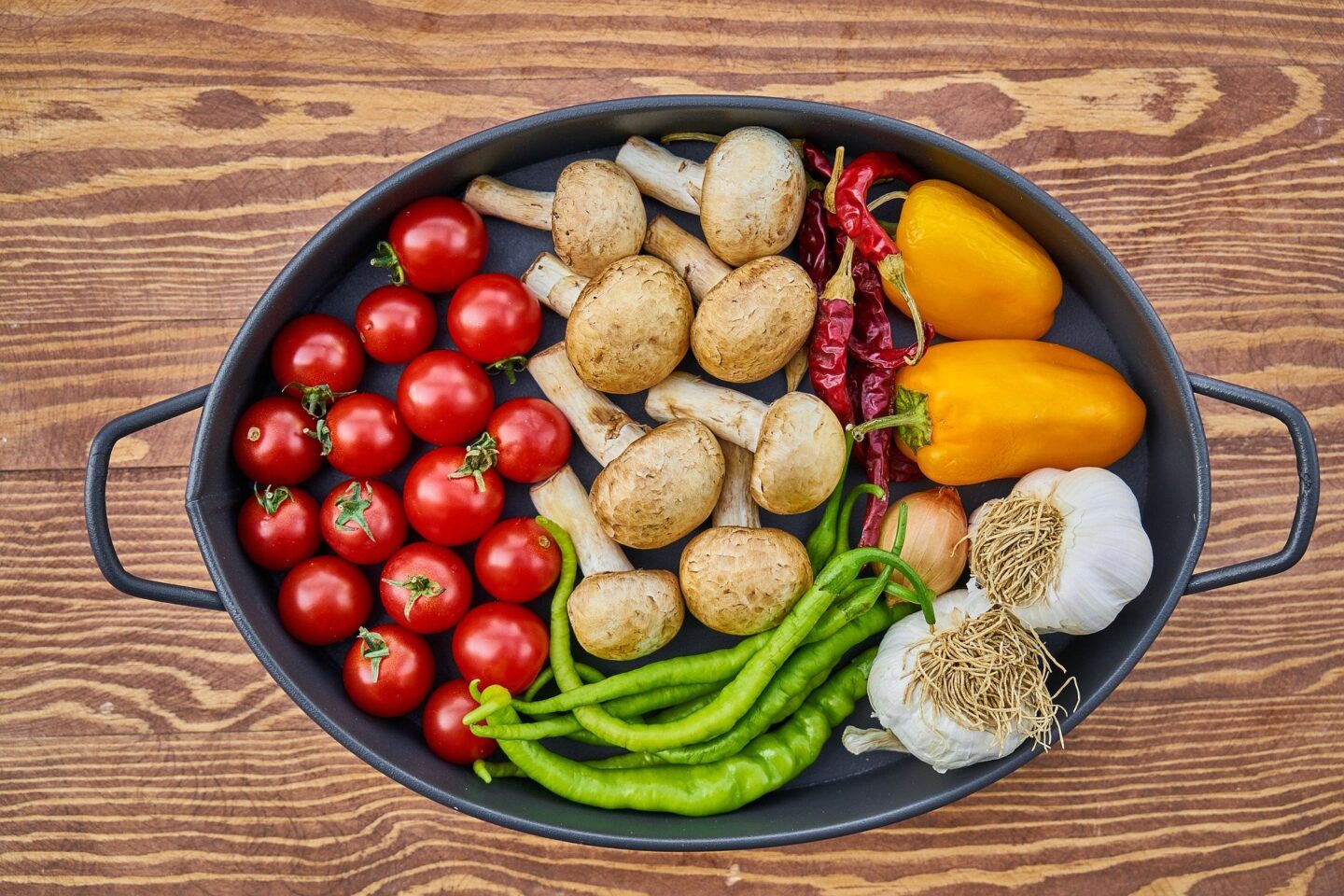When I first came across Intuitive eating a few years ago when I was trying to work out how to get out of the calorie counting/binge eating cycle I had found myself in, I thought that sounds amazing. It’s just so logical and makes so much sense…I will have to pass though thanks, I still need to lose weight.
So I stayed stuck in my calorie counting/binge eating cycle for a bit longer, enviously following women on Instagram who were eating healthily without counting calories.
They obviously had some sort of inbuilt willpower I could only dream of having – because every time I attempted the ‘just eat healthy without counting calories’ thing, I ended up eating more ‘junk’ food than normal.
So, to cut a long story short, I attempted intuitive eating a few times on and off, somehow I ended up interpreting it as Calorie counting = eating healthy and trying to lose weight, intuitive eating = eating whatever I wanted whenever I wanted.
Which kind of completely missed the point, and it also made it take a lot longer than it should have for me to finally understand how intuitive eating works.
So I am hoping to be able to explain what intuitive eating is here without you falling into the same trap as I did!
It’s also important to remember that intuitive eating is not ‘letting yourself go’ or ‘being unhealthy’.

Where has intuitive eating come from?
Intuitive eating isn’t a new thing. It’s actually been around since the 1970s but it was in 1995 that Evelyn Tribole and Elyse Resch, two dieticians created the 10 principle framework for intuitive eating.
Intuitive eating was created to help people to learn to trust their bodies again and trust that your body will tell you what to eat, when to eat and how much food you need to eat.
To help people to move away and to heal from the effects of dieting (e.g. binge eating, food guilt and obsession, all or nothing mentality, eating in secret, gaining rebound weight from restrictive diets etc).
What is intuitive eating?
Intuitive eating is a simple way of eating that allows you to get reconnected with your body and your hunger/fullness so that you can start eating in a more ‘normal’ way and ditch the diets once and for all.
We are all born as intuitive eaters. You are born intuitively knowing how much food your body needs for energy. You are born knowing the best way to fuel your body, and as you grew bigger you instinctively ate more food but still stopped when full. When we were hungry as babies we cried, when we were full and satisfied we refused more.
Have you ever seen a child having one bite of a chocolate button and leaving the rest? Or seen them having a bag of sweets in their bedroom for weeks and weeks where they are just dipping in and having one when they fancy but ignoring them the rest of the time?
That is intuitive eating.
Intuitive eating means turning inwards and listening to our own internal wisdom when it comes to what and when we need to eat and how much we need rather than being influenced by external sources – like diets and dieting apps.
We are the expert of our own body.

How do we lose touch with our intuition?
Somewhere along the lines though, we lose this ability.
Having scheduled meal times and sleep times and routines as a child plays a part in this – not that there is anything wrong with this but it means we stop listening to our body a little bit more.
It may also be because we are told to finish what is on our plates as children, so we slowly start to drown out the voice that tells us we are full because we consistently are eating past it.
We are given treats to reward us for doing well at school and good behaviour, we have treats taken away from us if we misbehave or don’t clear our plates.
Then of course as we get older, there is the media showing us photo-shopped pictures of thin, beautiful women that makes us think we have to look like them to be accepted in society.
We are bombarded with magazines telling us to ‘cut out carbs’ or ‘boost your metabolism by eating x amount of meals a day’.
Everyone has some advise on the best way to lose weight and how you should eat and everyone has something different to tell you and with all this information it’s hard to drown that out and listen to what your body actually wants.
It’s not really surprising we lose touch with our intuition.
The good news is though that if we can lose that ability, we can re-learn it.
Intuitive eating means ignoring the confusing and contradictory diet rules and learning to tune back in to your body.
You don’t need a meal or diet plan to tell you what to eat or how much to eat, you just need to learn how to check in with your self on your hunger levels and how that food makes you feel.
Intuitive eating allows you to get rid of that voice that tells you that you are good for eating a salad and bad for eating that chocolate.
Tuning into your body will allow you to learn what foods you actually like and makes you feel good – and which foods make you feel not so good.
What are the 10 principles of intuitive eating?
Intuitive eating is not a linear process, so these principles are more of a guiding framework than a diet plan. This allows you to keep structure when you are working out what works the best for you.
- Reject the Diet mentality
- Honour your hunger
- Make Peace with food
- Challenge the food police
- Respect your fullness
- Discover the satisfaction factor
- Honour your feelings without using food
- Respect your body
- Exercise – feel the difference
- Honour your Health with Gentle Nutrition
Remember, you can always ask for help!
While it seems like there are a lot of principles and it may seem slightly daunting looking at this list, I promise you it’s not.
I’m a big believer in keeping things simple, so keep reading to find out how.

So, How do I get started?
Step 1 – Heal your relationship with food.
We all have to eat. We literally cannot survive without eating.
When we restrict our food and follow diets or try to cut out certain foods, our primal biological systems are going to over-ride them and we end up bingeing.
We then get stuck in a cycle of diet starts Monday, binge eat, guilt, diet starts Monday cycle.
95% of diets do not work. In theory all diets work, but if they are not sustainable long term, then they have failed.
Think about it for a second, if hating your body and restricting how much food you ate worked – would you really be stuck in this ‘Diet starts Monday’ cycle?
So the first step is to ditch the diet and food rules, and start tuning into your bodies hunger and fullness levels.
It’s important to remember that all foods fit – there is no such thing as a good or a bad food. Some foods may be more nutrient dense than others but they definitely don’t have a moral attached to them.
Step 2 – Reconnect with your body.
The next step is to learn how to tune in and listen to your body and understand what it is trying to tell you. Our emotions, tiredness, energy levels and our eating habits are linked, far more than we usually realise.
By tuning in we will be able to understand more about what it is that we actually need – it isn’t always food.
When we tune in we can understand which foods work well in our body and which don’t work quite as well.
In this stage we can become curious about what types of movement our body enjoys and understand that it’s not just about weight loss – movement is important for health, mental health and self-care.
When we reconnect with our body and tune in we can also start priortising self-care as our body will allow us to realise what it is we actually need – whether that is a ten minute break with our book or a ten minute productivity session to ease a bit of stress.
If we don’t tune in, we don’t know.
Step 3 – Simple Nutrition.
Nutrition is complex but it is doesn’t need to be complicated.
Eating a healthy balanced diet is an important part of looking after yourself as a mum. The last thing we need is complicated. We also don’t need to put a huge amount of pressure on ourselves trying to find the perfect ‘balance’.
In this stage we are able to re-define what balance means for us.
When we have healed our relationship with food and have learnt to tune in we can start getting back to the basics with our nutrition, but we have to be in the right place first.
I hope you have found this helpful, let me know if you have any questions.
Beth x

This is such a good post thanks Beth. I have been thinking about something along these lines. I really don’t have a good relationship with food but its not the worst. Its more emotional eating that gets me so if you have any tips on that in future it will be great.
Author
I’m glad it was helpful!
Yes definitely going to have some posts about emotional eating, it’s something I have struggled with too. xx